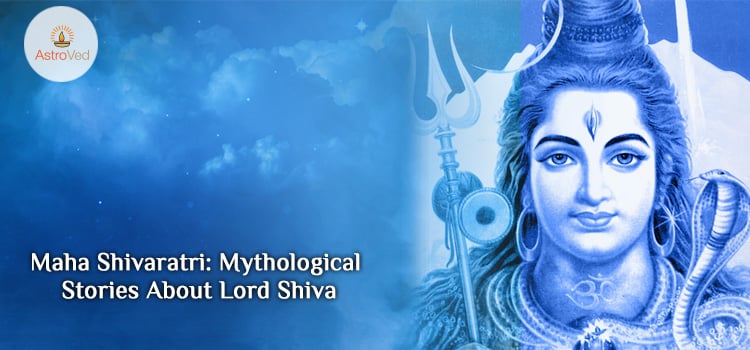About Maha Shivaratri
Maha Shivaratri is one of the most widely celebrated Hindu festivals in India and Nepal. This momentous festival is observed every year in honor of the great Hindu God ‘Shiva’, who forms the holy trinity of Hinduism along with Lord Vishnu and Lord Brahma. The term ‘Maha Shivaratri’ means ‘Great night of Shiva’, and is observed on the new moon day in the Hindu month of ‘Phagun, which corresponds to February–March according to the English calendar. Maha Shivaratri is the most important and auspicious of the 12 Shivaratris that are celebrated every year. It is believed that it was on this day that Lord Shiva and Goddess Parvati got married, which is one of the many reasons for the celebration of this festival.

Legend of Maha Shivaratri
The Puranas state that when the Devas and Asuras were churning the great cosmic ocean (Samudra Manthan), a pot of poison emerged from the depths of the waters. This potent poison was so powerful, that the Gods and demons were terrified that it would destroy the entire world. In desperation, they sought an audience with Lord Shiva and conveyed their concern. The ever-magnanimous Lord Shiva assured them that he would address their concerns and proceeded to drink the contents of the deadly pot. However, he did not swallow the poison, but held it in this throat. This resulted in his throat turning blue and ever since, Shiva came to be known as ‘Neelkanth’, which means ‘the one with the blue throat’.
Another story narrates the tale of the three Gods, Brahma, Vishnu and Shiva discussing the supremacy of each other. Shiva assumed the form of a massive pillar of fire, which sprawled the entire Universe. Brahma and Vishnu went about in different directions to find the end. Vishnu tried his best to trace the end but could not, so he admitted defeat. However, Brahma stated that he had found the end, but Shiva knew that he was wrong, so he proclaimed that humanity as such will not pray to him. Perhaps, the most important legend associated with Maha Shivaratri is the marriage of Shiva and Devi Shakti or Goddess Parvati. This union was brought about by great penance and austerities performed by the Divine Mother, as Shiva was pining for the loss of his first wife ‘Sati’. The whole universe was in disarray due to his sorrow, but he eventually recovered from this loss and married Parvati, another form of Goddess Sati. Maha Shivaratri is thus celebrated as the day when this union took place. Another story states that on the Shivaratri day, a ruthless hunter was chased by a hungry lion and took refuge in the branches of a Bilva tree. The lion however, waited under the tree for the hunter to fall asleep and fall down. The desperate hunter kept plucking the leaves and dropping them down one by one to keep awake. It so happened that there was a Shiva Lingam at the bottom of the tree and the leaves fell on it all night long. This act served to propitiate Lord Shiva and he came to the rescue of the hunter and saved him from certain death. Till today, the tradition of worshiping Shiva with Bilva leaves holds great significance on the day of Shivaratri.
Maha Shivaratri is considered as an extremely auspicious day and celebrated with great fervor by Hindu devotees across the world. Devotees observe a fast and worship Lord Shiva with great reverence, and all Shiva temples are packed with people who come to pay obeisance to the Lingam. Traditionally, milk Abishekam is done to the idol of Lord Shiva, which is usually in the form of a Lingam in temples. The merciful Lord Shiva grants his devotees with everything they wish for, and bestows them with peace, prosperity and happiness.





















